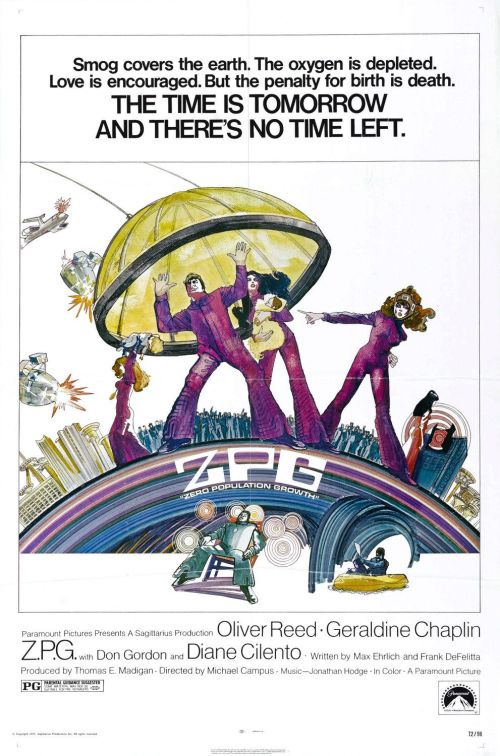
By Richard Winters
My Rating: 7 out of 10
4-Word Review: Participants of ballroom dancing.
In 1976 director James Ivory, who had already collaborated with writer Ruth Prawer Jhabvala on 5 other films, wanted to turn her short story ‘How I Became a Holy Mother’ into yet another movie. The story required one scene to be shot at The Roseland Ballroom, a dancing venue in New York City, that was originally built as a ice skating rink in 1922 and then converted to roller skating only to eventually become a popular retreat for ballroom dancers. When Ivory approached potential investors none of them liked the story, but did like the idea of shooting a movie inside Roseland. They agreed to give money to the project as long as the entire setting took place in that venue.
Ivory then had Jhabvala interview the people at the club to get a better understanding of the folks who went there and to help generate story ideas. It was through these visits that Jhabvala was able to come-up with three different vignettes that is based closely on real-life events that occurred with people who attended the Roseland throughout the years and most of the dancers seen in the background were actual members of the dance hall and not paid extras.
While the owners of the Roseland were happy to give permission to shoot there it did come with several stipulations. One was they could only shoot during the day on Wednesdays and could not alter any of the interiors in any way, which included the lighting. Despite these restrictions he was able to succeed pretty well though at the 30-minute mark it’s obvious in a scene where Christopher Walken and Geraldine Chaplin are supposedly in a room alone that there’s a cameraman there as you can easily see his reflection on the wall mirror. Ivory was also forced, much to his chagrin, to hire a scenic artist and art director onto his crew even though they were unable to make any changes to the set, but union rules required one must be hired anyways, and the teamsters union picketed the production outside the building until Ivory finally relented, which resulted in 2 extra people being brought onto the crew to sit around and do absolutely nothing, but still getting paid.
As for the stories they’re okay, though the first one, ‘The Waltz’ is clearly the weakest despite excellent performances by the two leads. It stars Theresa Wright as a widow named May who keeps seeing a reflection of herself and her former husband when they were much younger in a mirror in the ballroom as she dances with her new partner named Stan (played by Lou Jacobi). No one else sees this same reflection except for May and most think she’s going nutty. Stan wants May to get over her memories of her old husband and focus solely on him, but when she doesn’t he loses interest in her though May finally comes around when she realizes that the past is the past and there’s no going back, so why not instead live for the present. This segment, unlike the others, relies heavily on voice-over narration of Helen Gallagher, who plays Cleo, a dance instructor, it also enters in weird supernatural elements as it’s never explained why May keeps seeing these reflections, is she really going nuts, or is some ghostly phenomenon trying to speak to her from the afterlife? This never gets answered and hence is why the story really doesn’t amount to much.
The second story, ‘The Hustle’, is the best one and features a terrific performance by Chaplin. It involves Russel (Christopher Walken) who is seeing the much older Pauline (Joan Copeland) not so much because he loves her, but more because she pays him to be her escort and he likes the money. He then meets Marilyn (Chaplin) who has just gone through a rough break-up. He immediately becomes smitten. Marilyn is at first reluctant in getting into another relationship, but eventually falls for Russel only to learn that he’s not quite ready to give-up Pauline, or her money and seems to want to juggle the two, which Marilyn does not want. While this segment is quite captivating I would’ve like a better, more dramatic confrontation and less of an ambiguous conclusion.
‘The Peabody’ is the third and final segment. It deals with Ruth (Lilia Skala) an older woman with a strong personality looking for a suitable dance partner to win a competition. She meets Arthur (David Thomas) a meek elderly man who agrees to partner with her despite having a weak heart. Ruth takes his friendship for granted and is quite demanding of him only to learn to regret it when he’s no longer around. Skala’s performance, of which she got nominated for the Golden Globe, makes catching this part well worth it.
My Rating: 7 out of 10
Released: October 2, 1977
Runtime: 1 Hour 44 Minutes
Rated R
Director: James Ivory
Studio: Merchant Ivory Productions
Available: DVD

